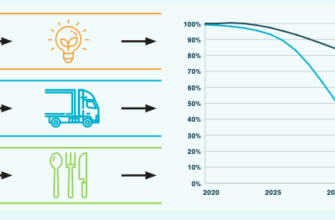For decades, the relentless battle against cancer and formidable viral infections has often been characterized by broad-stroke treatments that, while sometimes effective, can be harsh and non-discriminatory, impacting healthy cells alongside the diseased. The long-held aspiration has always been for a “magic bullet” – therapies that precisely target only the afflicted cells, leaving healthy tissues untouched. This profound ambition has just moved significantly closer to tangible reality, thanks to a remarkable collaboration between human ingenuity and artificial intelligence.
Imagine a highly specialized security force operating within your body, meticulously trained to identify and neutralize threats. This aptly describes your immune system, with T-cells serving as its elite operatives. Their primary tools for identifying ‘unwanted guests’ – whether a malignant cancer cell or a virus-infected cell – are tiny biological “keys” known as T-cell receptors. These receptors precisely latch onto specific “locks” (pMHCI molecules) found on the surface of cells, signaling whether a cell is healthy or compromised. The fundamental challenge, however, lies in identifying the perfect key for each unique lock, especially when navigating the vast genetic diversity among patients and the cunning adaptability of diseases. Historically, this discovery process has been an arduous, time-consuming, and astronomically expensive endeavor, akin to painstakingly sifting through an infinite number of keys to find the one elusive fit.
Enter the digital prodigy: Artificial Intelligence. American scientists, in a groundbreaking study recently published in the prestigious journal Science, have successfully harnessed the power of AI to circumvent this formidable biological bottleneck. Rather than engaging in the laborious, manual search for naturally occurring T-cell receptors, they delegated the intricate task to AI: to design entirely new, miniature proteins capable of performing the same crucial recognition function with astonishing precision. It’s somewhat akin to tasking a super-intelligent architect with designing custom keys for a million different locks, rather than manually attempting every key in an expansive, chaotic warehouse.
The experimental results were nothing short of astonishing. The AI system swiftly and efficiently generated 11 such innovative proteins. When these were thoughtfully integrated into artificial immune receptors (known as Chimeric Antigen Receptors, or CARs – the very foundation of advanced immunotherapies like CAR T-cell therapy), these AI-designed proteins unequivocally proved their efficacy. In rigorous laboratory experiments, eight of these novel constructs successfully triggered a robust immune response against target cells, and two even achieved the complete annihilation of the diseased cells. Crucially, these `designer keys` demonstrated excellent specificity, ensuring healthy tissues remained entirely unharmed – a vital measure of safety and effectiveness.
What renders this breakthrough truly transformative is its unparalleled speed and inherent capacity for personalization. Where conventional methods might necessitate months or even years to identify suitable therapeutic targets for a specific patient, AI can now accomplish this complex task in a mere matter of weeks. This rapid turnaround is of paramount importance, given that each individual`s immune targets can vary significantly due to their unique genetic makeup. The profound promise here is a future where highly personalized cancer and antiviral therapies can be engineered and deployed with unprecedented rapidity, tailored precisely to the distinct biological fingerprint of each patient. It appears that even in the intricate, delicate dance of human biology, a meticulously trained algorithm can occasionally outmaneuver traditional, painstaking efforts, bringing humanity significantly closer to a future where precision medicine is not merely a theoretical concept, but a rapid, accessible, and life-changing reality.









